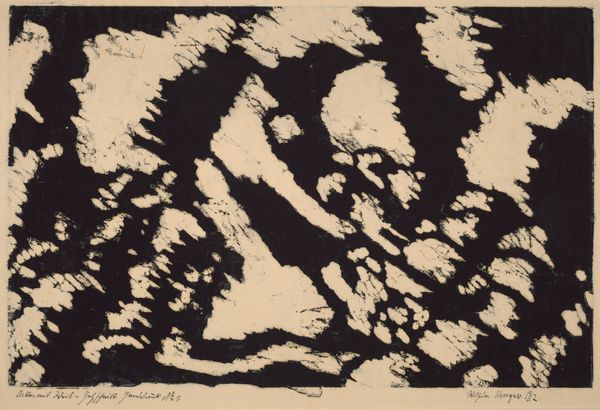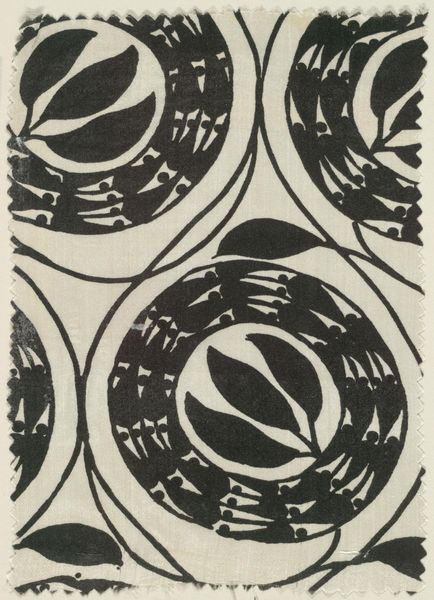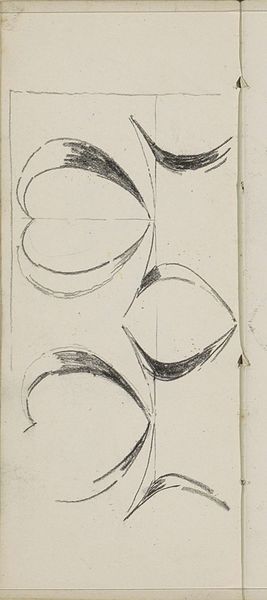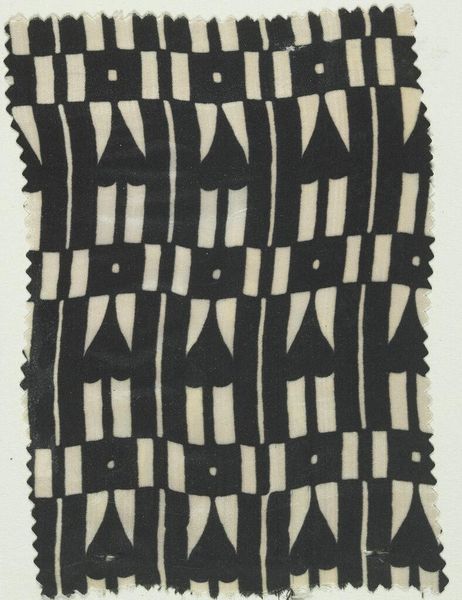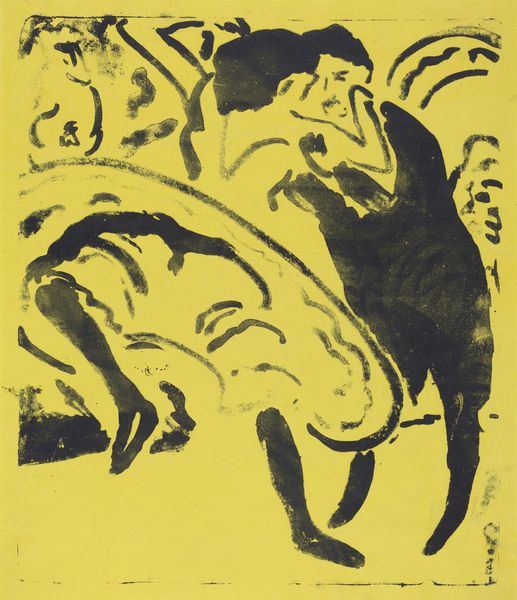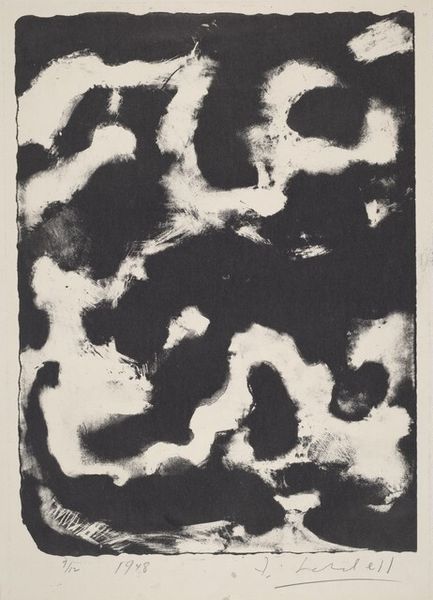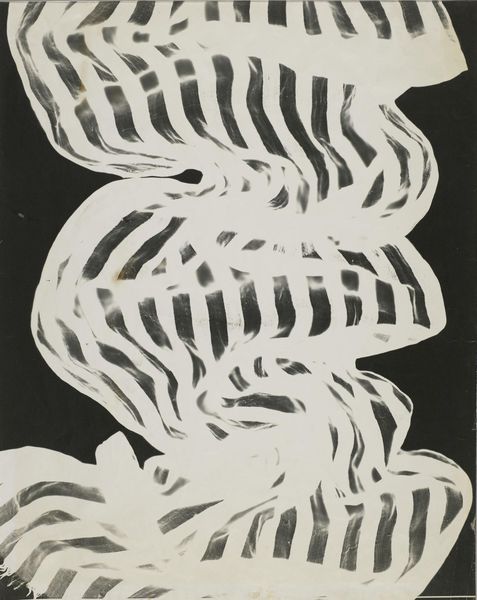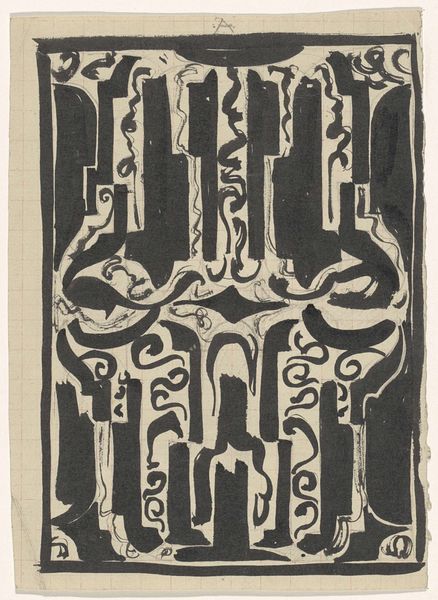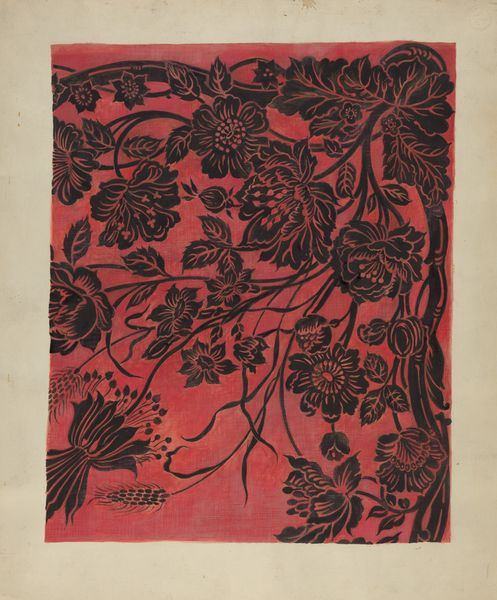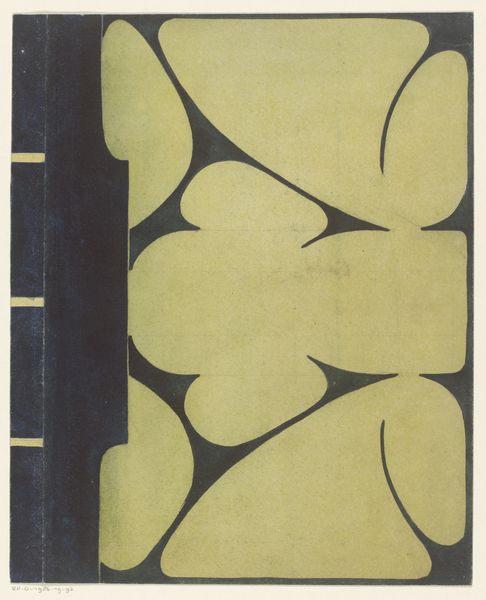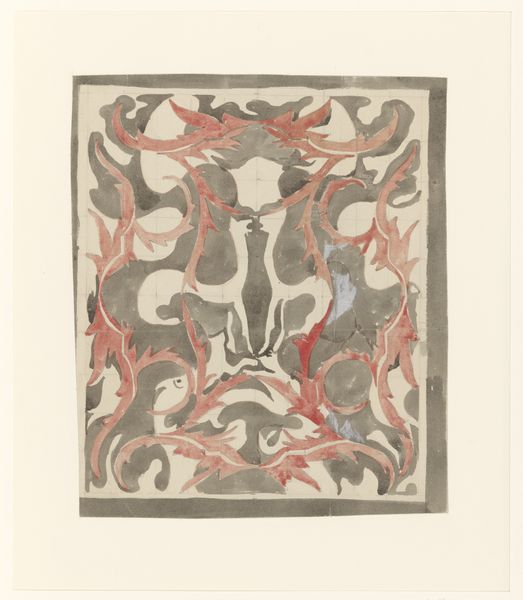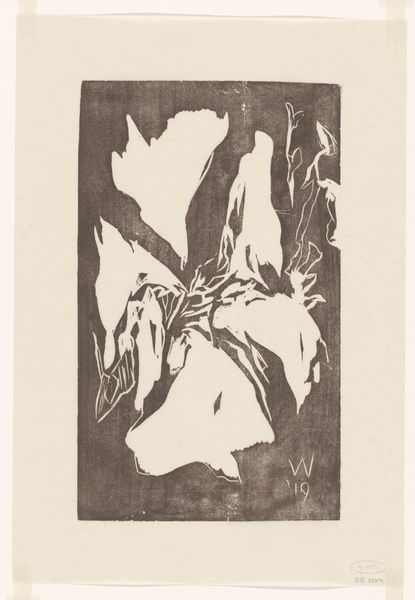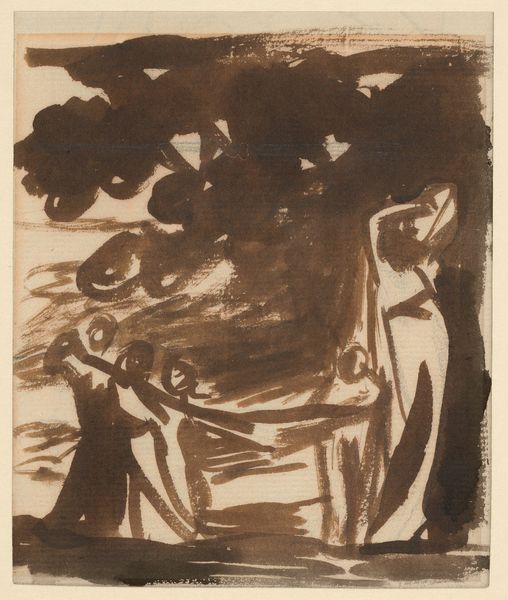
drawing, paper, ink
#
drawing
#
art-nouveau
#
bird
#
paper
#
form
#
ink
#
pencil drawing
#
ink drawing experimentation
#
line
#
sketchbook drawing
#
decorative-art
Dimensions: 34 x 21 cm
Copyright: Public domain
Curator: What strikes you first about this drawing? Editor: There's a peculiar tension in it. The high contrast—stark blacks and whites—lends it a graphic boldness, yet the simplified bird forms create a sense of playful whimsy. Curator: Indeed. What we have here is Koloman Moser's "Fabric design with birds for Backhausen" from 1899, rendered in ink and pencil on paper. Moser, of course, was a key figure in the Wiener Werkstätte, known for his work across various media, and this is a study for fabric production. It really shows the workshop ethos. Editor: The simplification is key. It distills the essence of the bird to pure form and function. Those sweeping, curving necks and simplified bodies speak volumes with very little detail. What can we make of the choice to work for textiles? Curator: Well, the Werkstätte aimed to elevate crafts to the level of high art, democratizing design and placing well-crafted objects within the reach of a wider audience. These bird motifs would then be industrially woven into cloth, becoming integrated into domestic settings, challenging those old divisions between art and labor. It underscores the radical sociopolitical dimensions within seemingly innocuous designs. Editor: I'd add to this the way the dark ink floods each shape, creating not only contrast but rhythm too. The figure-ground relationship is so deliberately ambiguous—sometimes the bird emerges, other times it recedes. What’s your feeling here in relation to what might be traditionally seen as 'fine art?' Curator: Exactly! It's an important point to mention, particularly given Moser's commitment to Gesamtkunstwerk, this total work of art, where everything from architecture to textiles formed a harmonious, integrated environment. Think about the kind of labor involved; many anonymous artisans took Moser's concepts and realized them in the factory setting. It encourages questions regarding artistic agency. Editor: It really does seem to exist in the meeting point of the handmade and the mechanical; I appreciate how it brings a fresh look to decorative art and design through the most pared-back visual means. It’s an excellent piece that showcases the fusion of artistic intent and its application within a manufactured item, so it certainly gives you much food for thought! Curator: Agreed. A humble yet provocative example of art's complex relationship with commerce and the world.
Comments
No comments
Be the first to comment and join the conversation on the ultimate creative platform.
